Hiking in work boots is usually good enough for shorter trails or the occasional day hike. Usually, work boots are incredibly sturdy, offering hikers decent stability to keep them safe and moving on difficult terrain.
Depending on how old your work boots are, they may also be extremely comfortable. If you’ve broken them in, they’re likely formed specifically to fit your feet, so you’ll avoid things like blisters and sore feet that come with hiking in new boots.
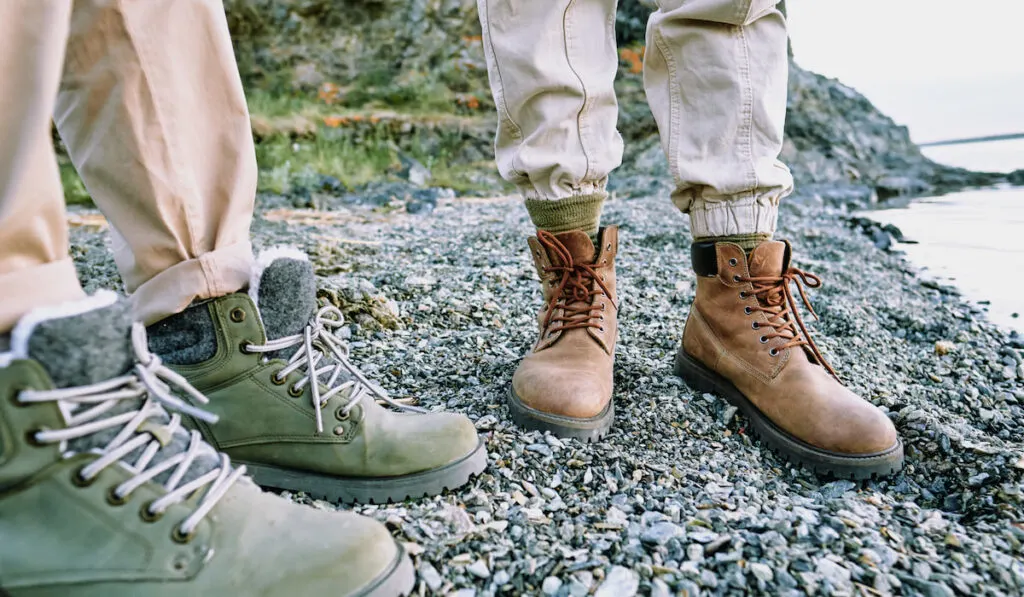
Technically, you can hike in any footwear, but the shoes you choose to wear will have a big impact on how you feel during and after you’re done.
Work boots may not be the best option for challenging climbs and multiday trips. They usually weigh more than your average hiking shoe, and there are other cons you should know about.
If you’ve got a pair of trusty work boots and you’re thinking about wearing them on a hike, here are some of the pros and cons of hiking in work boots.
Table of Contents
When Hiking in Work Boots Makes Sense
If you’re new to hiking, then busting out your work boots is a great solution for when friends ask you to go on a trail hike or camping. Work boots are built tough and designed to take a beating, so they’re perfect for the outdoors.
For the most part, the biggest concern you’ll have about hiking in work boots is whether they are broken in. A new pair of work boots will probably give you some blisters.
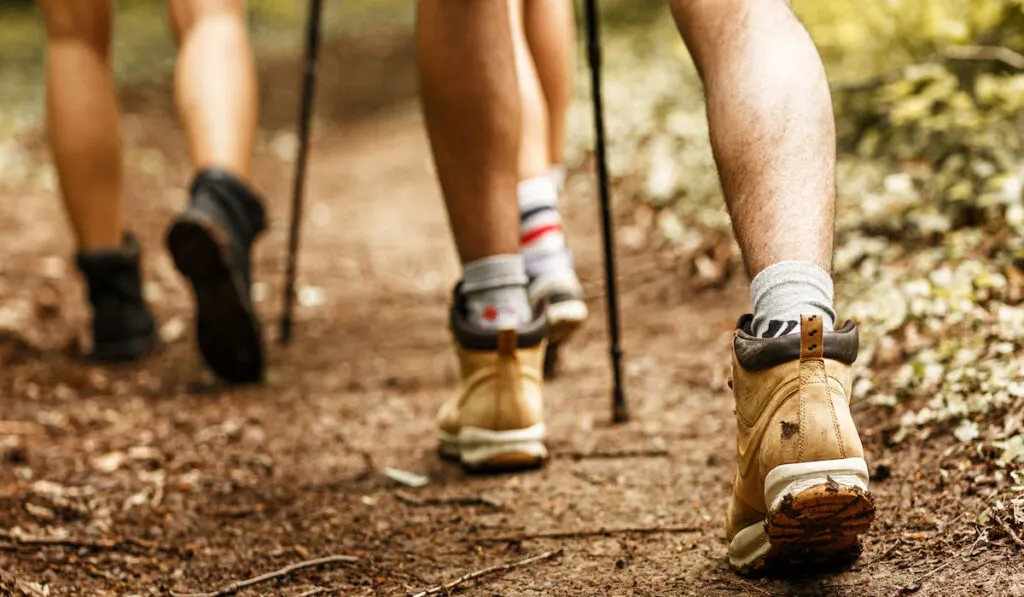
Your feet will have to work harder to move them up rocks and over logs, but generally, they’ll perform well.
Your work boots will improve if you wear them for years. Once the material is more flexible, they’ll match up quite well with a pair of hiking boots.
Also, if they have steel toes, then that’s even more protection against any hazards you’ll encounter while hiking.
There are, however, times when work boots will make you worse off. For example, if the weather isn’t cooperating or you are going on a multiday hike, you will probably end up regretting wearing your work shoes.
Things to Consider When Choosing Hiking Boots
People who don’t spend a lot of time hiking probably hear the word “boots” and think that any old pair will do.
The truth is that hiking boots have several features that make them ideal for hiking. However, while a pair of nice work boots will cover some of those bases, there are plenty of reasons not to wear them.
Here are some of the biggest concerns about wearing work boots on a serious hike.
Weight
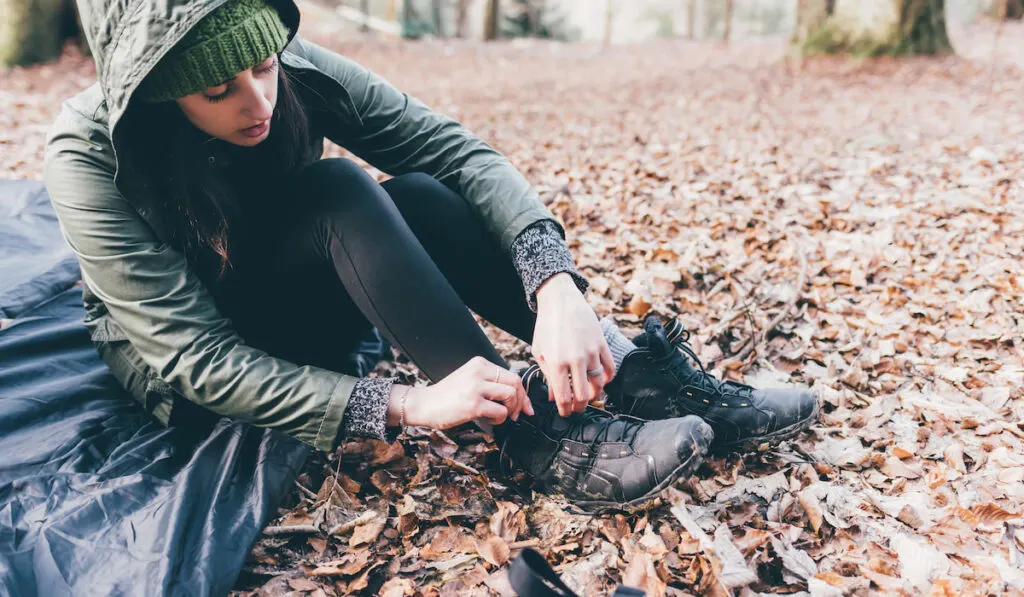
Heavy shoes will slow you down and make a challenging hike feel way harder than it already is.
Work boots protect wearers from heavy objects on a work site, so they’re usually sturdy and built with thick materials. Unfortunately, that protection typically means that they are much heavier than your average hiking boot.
Now, the weight won’t likely be a big deal on a short hike or a walk in the woods, but if you’re doing something like climbing a mountain or doing a portion of the Appalachian Trail, those added pounds will start feeling like added tons after not too long.
Weatherproofing
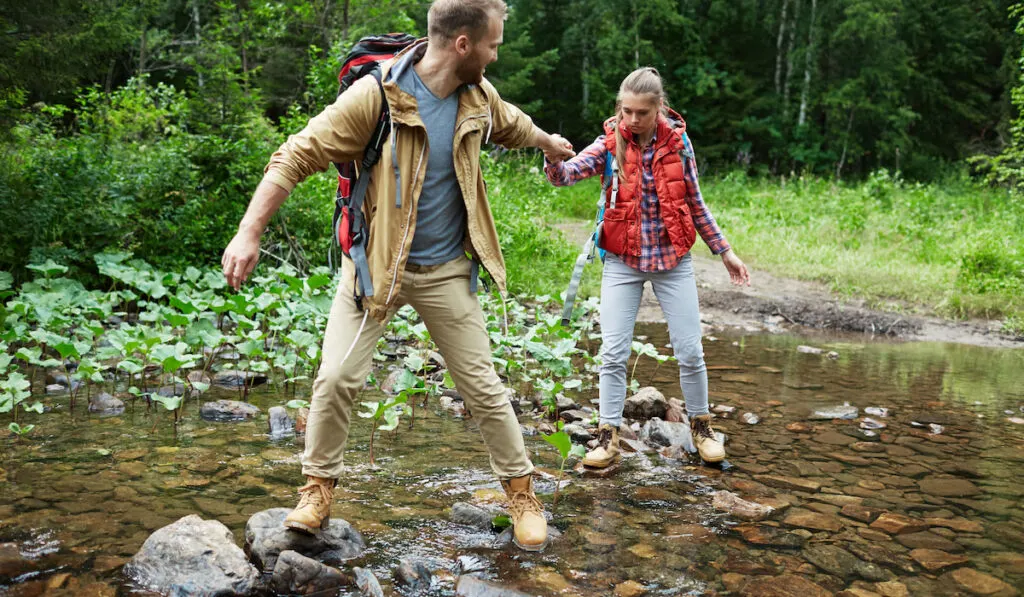
How weather-resistant are your work boots?
Some work boots are water-resistant, which is great. Weatherproofing makes any work boot a more viable hiking shoe option. However, not every work boot will perform well if you’re trekking through rivers and puddles or out in the rain for days.
Any experienced hiker will tell you that keeping your feet dry is a priority on any serious hike. If your work boots can’t do that, then don’t even think about wearing them.
Again, weatherproofing is another reason why most work boots will do fine on a shorter hike but should be left at home when you’re going on something more challenging.
Mobility
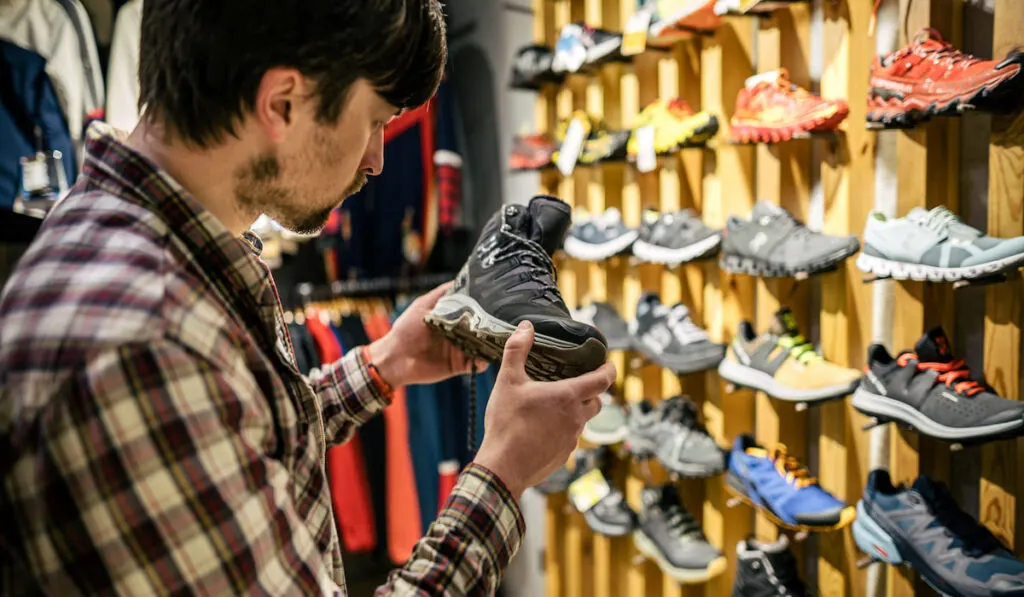
Even when shopping for hiking boots, you must find the right mix of flexibility and stability. Too much flexibility, for example, and you may end up spraining an ankle on uneven footing.
With work boots, you will usually find that they’re less flexible while maximizing stability.
Based on the hike you’re doing, this could mean it’s harder to move. When that happens, it’s easier to develop blisters, and your feet will feel sore.
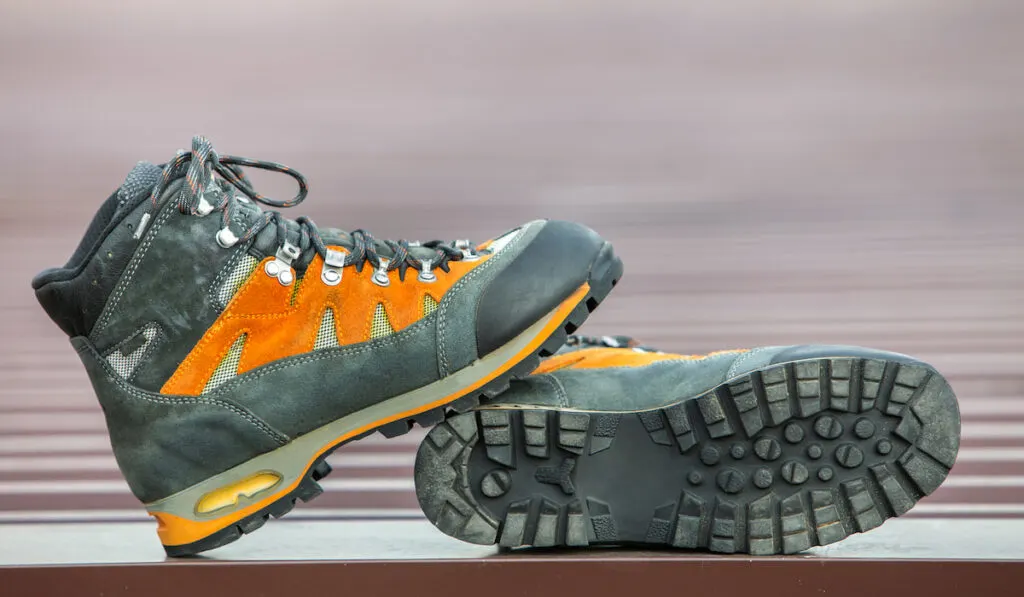
Soles Make a Big Difference
When you compare work boots and hiking boots, one of the biggest differences is found in the soles.
You often see thick rubber soles with standard tread with work boots. These thick and heavy soles protect wearers if they step on nails, sharp rocks, glass, etc.
Hiking boots, on the other hand, prioritize grip, so they have a lot more tread.
Hiking boot companies are more concerned about you slipping on wet or slippery surfaces. So while they’re also made of rubber, they’re focused on helping you climb and preventing falls.
Hiking boots are also a lot lighter to help you move with ease.

Wear Something Comfortable When You Hike
Work boots are made with protection and stability in mind. They’re heavier but are more durable than a typical hiking boot. Any consideration about comfort is entirely secondary to performance, especially when safety is at stake.
Hiking boot companies must balance performance and comfort more evenly. They need shoes that hikers can depend on to keep up with them, but they also need to make shoes that they can wear for days on the trail.
Whatever shoe you choose, make sure they feel nice on your feet, and you can imagine yourself wearing them for the entire hike, no matter how short or long.
Some people who wear work boots every day will tell you that they are the most comfortable pair of shoes they’ve ever worn. They mold to your feet and can feel like slippers. That usually happens when you wear a pair of shoes all of the time.
If it were up to us, we’d tell you to wear a pair of broken-in work boots on any day-hike or easy trail walk before going out and buying an expensive pair of new hiking boots. If you’re planning on hiking a lot, then a specialized hiking boot is a superior choice.
The same goes for when your work boots are still stiff or new; a hiking boot will be much more comfortable.

Choosing the Right Hiking Shoe
Every hiker is different. Some people even like to hike in Crocs or be barefoot.
Based on where you’re going and your experience level, you need a shoe that offers a good balance of durability, stability, and performance.
Find something that resists water, feels comfortable, and has a good amount of tread.
If possible, buy the shoe that checks all of those boxes and weighs the least. Then, you’ll thank yourself when the hike gets hard, or you’re low on energy.
At the end of the day, whatever helps you enjoy your hike and keeps you on the trail is the best hiking boot. So try them on before you take them on the trail for the first time, and stick with whatever shoe keeps your feet moving!
